Why a Saratoga Independent School Education Sets Students Up for Lifelong Success

Choosing the right school for your child is one of the most important decisions a parent can make. At Saratoga Independent School (SIS), education is more than academics—it's a foundation for life. From preschool through middle school, SIS fosters confident, curious, and capable learners who are not only well-prepared for high school and college but also equipped to thrive in an ever-changing world.
A Balanced Foundation: Skills, Play, and Exploration
A key strength of SIS is its intentional balance between academic rigor and joyful exploration. One parent, reflecting on their 11-year journey with SIS, shared:
"We chose SIS for preschool because we felt the program struck an excellent balance between teaching skills and encouraging freedom and play."
Another parent echoes that experience:
"Saratoga Independent School has provided our children with a strong foundation, both academically and socially, that set them up for success in high school."
This approach continues throughout each grade level. Students aren’t just learning facts—they're developing the habits of mind and personal agency that empower them to learn independently and passionately.
A Community That Nurtures Growth
Beyond the classroom, SIS is a vibrant community where families, educators, and students are truly connected.
"We immediately loved the sense of community and the opportunity to meet a fun and diverse group of local families. The teachers were warm and engaging and took the time to get to know us and our kids."
SIS also supports students in developing essential life skills:
"They developed a love of learning, effective conflict resolution skills, and the confidence to excel in group settings."
This deep investment in relationships creates a safe and supportive environment where children are known, valued, and celebrated. The result? Students feel confident to take risks, express themselves, and explore their potential.
Preparing for High School—and Beyond
SIS's middle school program is uniquely designed to empower students during their critical adolescent years. Whether it's through academic challenges, student leadership opportunities, or service learning, SIS students build the resilience and adaptability they’ll need for future success.
"Our kids have had strong academic opportunities while also having time for friends, fun, exploration, and service. They have learned to adapt to schedules and expectations while also having space to follow their own interests and try new things."
This holistic preparation pays off. The parent continues:
"Now that our older child has moved on to a rigorous prep school, we can see the ways in which SIS prepared him for future academic excellence, encouraging him to ask questions and empowering him to take risks."
Another family observed a similar outcome:
"Thanks to SIS, they were both well-prepared to tackle the rigor of 9th grade at the Emma Willard School."
The outcome? Students who make the high honor roll in their first semesters, not just because they have strong academic skills, but because they carry with them confidence, curiosity, and a deep-seated love of learning.
SIS Graduates: Achieving Great Things
Time and again, SIS alumni go on to achieve remarkable success in high school, college, and beyond. Among their many accomplishments:
- Valedictorian of high school class
- National Merit Scholar and U.S. Presidential Scholar
- Student Body President, Principal’s List and National Honor Society membership
- Perfect SAT scores
- Gold Medalist in figure skating at Empire State Winter Games
- Harvard Book Award and publication in academic journals
These achievements are more than just accolades—they reflect the strength of character, discipline, and love of learning that begins at SIS.
Empowered Learners for a Changing World
The real gift of a Saratoga Independent School education is not just academic preparation—it’s the development of young people who are excited to learn, empowered to lead, and ready to make a difference.
"Our kids have loved school and felt like valued members of a community that celebrates who they are as individuals while preparing them for success in the wider world."
At SIS, students graduate not only with strong academics, but with the tools and mindset to thrive—wherever life takes them. See a full list of high schools and colleges attended by SIS graduates.
Want to see how SIS can help your child build the foundation for a bright and successful future? Schedule a visit and experience the SIS difference for yourself.
Saratoga Independent School Expands Award-Winning Preschool Program for 2025–2026 School Year
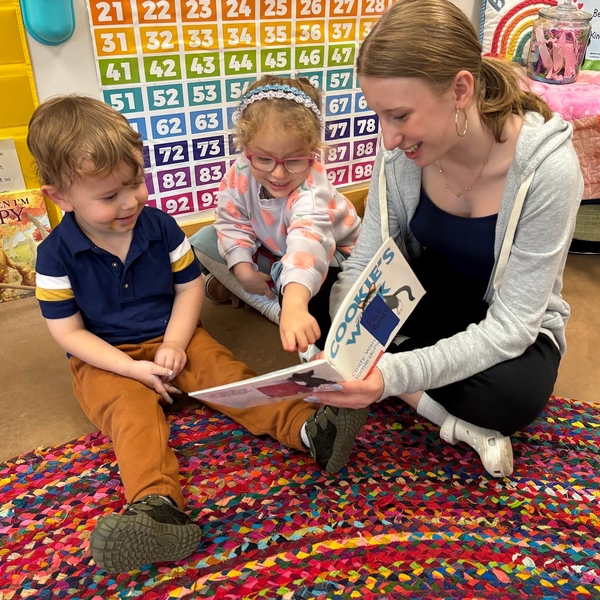
Saratoga Independent School (SIS) is thrilled to announce the expansion of its award-winning Preschool (PreK) program for the upcoming 2025–2026 school year. Designed for 3- and 4-year-old children, the program offers a warm, happy, and nurturing environment where young learners thrive through a balance of play and enriching educational experiences.
This expansion reflects increasing demand from families seeking a high-quality, developmentally appropriate program that encourages intellectual, social, emotional, and physical growth in a safe and supportive setting.
“At Saratoga Independent School, we believe children learn best through hands-on, meaningful experiences,” said Shauna Swinimer, Lower School Director. “Our PreK expansion will allow more families to access the type of early education that nurtures curiosity, confidence, and kindness.” As an inclusive, nurturing community that values diversity and mutual respect, Saratoga Independent School is committed to cultivating in all students the knowledge, skills, work ethic, and character needed to lead purposeful, healthy lives—beginning with a strong foundation in the earliest years of learning.
The SIS PreK program emphasizes small class sizes, with a 6:1 student-to-teacher ratio and two experienced educators in each classroom. Children enjoy hands-on, thematic learning that incorporates early literacy and math skills into everyday activities. Students participate in Spanish and music classes each week, adding rich layers to their language and creative development. The program welcomes both 3- and 4-year-olds and offers a secure, monitored campus where safety and comfort are prioritized.
Students spend time outdoors on the school’s 60-acre campus, exploring wooded trails, learning in natural settings, and developing gross motor and social skills on the PreK playground. Daily before- and after-care options as well as flexible enrollment options are available to meet the needs of different families. The Half Day Morning program runs Monday through Friday from 8:45 a.m. to 11:15 a.m. The Full-Time Full Day program runs from 8:45 a.m. to 3:00 p.m. Families looking for added flexibility can also take advantage of the Full Day Flex option, allowing students to attend full-day sessions on a drop-in basis, depending on availability.
Saratoga Independent School accepts applications on a rolling basis, but families are encouraged to schedule a tour and apply early, as PreK classes fill quickly.
For more information or to schedule a visit, please go to www.siskids.org/tour or contact the Admissions Office at (518) 583-0841 or cfortune@siskids.org.
Classroom to Concerts with Saratoga Chamber Players
Saratoga Independent School Begins Musical Journey with Saratoga Chamber Players
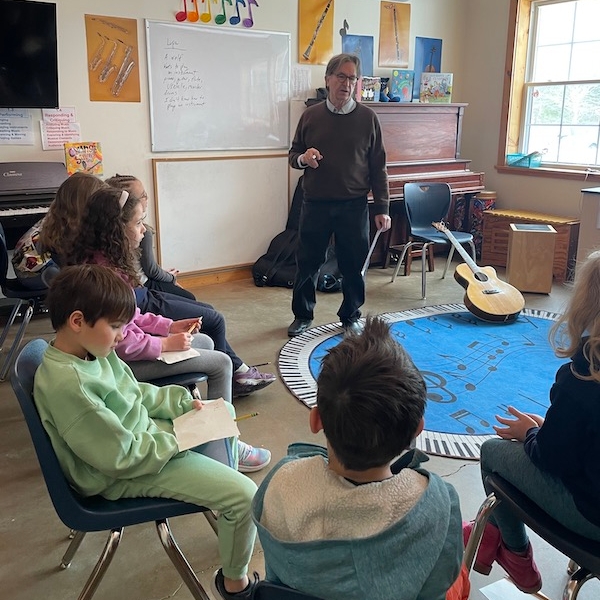
The Saratoga Chamber Players are thrilled to sponsor, with support from New York State Council on the Arts, individual sponsors and the Upstate Coalition for the Arts - the highly anticipated “Classroom to Concert” program, an immersive and transformative music experience for the students of Saratoga Independent School (SIS). Third through fifth-grade students will be working with Saratoga Chamber Players composer and cellist Eliot Bailen as they embark on a musical journey that celebrates creativity, collaboration, and community.
In preparation for the program, students have been busy working with SIS music teacher Zachary DiMeglio, crafting musical stories that capture the essence of life at SIS. These stories are inspired by the school’s motto—“We take care of ourselves, each other, our school, and our community”—and feature creative elements such as the school’s buddy bench and woodland creatures that bring this message to life.
“Classroom to Concert is more than just a musical program; it’s a platform for students to express themselves and work together. It instills pride and ownership in the creative process, empowering every child to participate” noted Saratoga Chamber Players Executive Director, Lynne Gelber. “The program features hands-on activities and interactive lessons that demonstrate how a simple idea can evolve into a full musical composition, providing a truly unique learning experience for students” Gelber added.
The program will culminate in a spectacular final concert in late spring, where professional musicians will join the students on stage to present their compositions in a collaborative performance. The concert will showcase how teamwork, creativity, and music come together to create something truly special.
Saratoga Chamber Players, now in its 38th year, offers 4-6 chamber concerts a season. Learn more at www.saratogachamberplayers.org.
Rigorous Academics & Thematic Learning
Funds for Expanded Financial Aid Now Available for 2024-2025
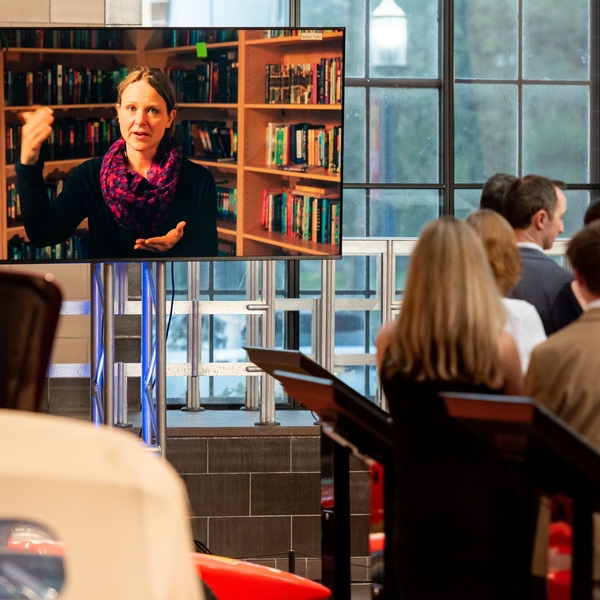
Saratoga Independent School hosted its annual fundraising event, Big Night Out, on Friday, May 3rd, at the Saratoga Automobile Museum. A Live Auction and Paddle Raise generated significant funds to expand the financial aid program. "The goal of the evening was to increase opportunities for students to access the exceptional education we provide here, regardless of financial constraints. We're thrilled to have such a generous community of sponsors and families who helped us to achieve that goal,” noted Bob Ahrens, SIS Head of School. Currently, 20% of the student body of 175 students receive aid at some level.
Saratoga Independent School offers a Pre-K through 8th grade private, day school education. Students attend from a 30-mile radius, including six school districts that bus students daily. “Our commitment to individualized attention is a cornerstone of our educational approach, with an average class size of twelve students. This ensures that each student receives the support and guidance they need to thrive academically and personally” added Ahrens. The small school community also translates to a student having multiple faculty and staff members available to support the student and get to know their interests and needs. “Our 60-acre campus provides students with plenty of outdoor learning, while we remain focused on teaching a strong curriculum that helps students build a foundation for a love of learning as well as comprehension for a successful future,” noted Ahrens. “We recognize that many students thrive in the environment we have created at SIS and we want that opportunity to be available to more students, regardless of their financial situation”.
Families interested in attending Saratoga Independent School for the 2024-2025 school year are encouraged to contact Colleen Fortune, Director of Admissions, to learn more about the school, schedule a tour, and begin the enrollment and financial aid process. Contact cfortune@siskids.org or 518.583.0841 Ext. 321.
World Languages at SIS: An Interview with Madame Brie / Señora Brie (Briana Kuruzovich)
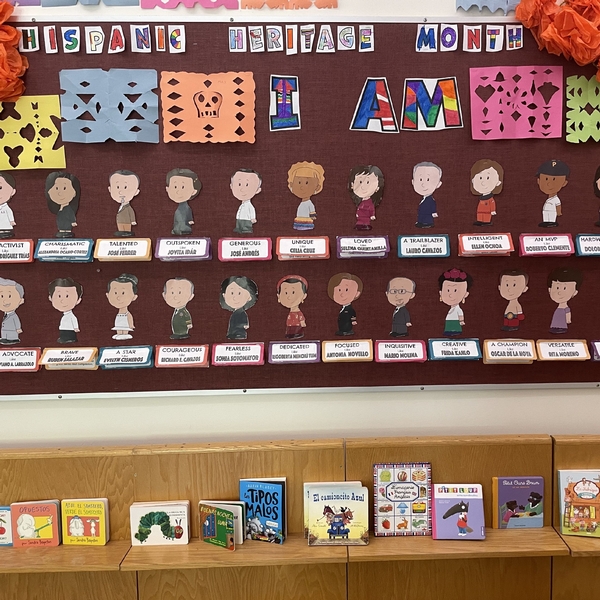
Madame / Señora Brie has been a part of the SIS family since 2019, when she began teaching in the after school French Club, officially joining the faculty in 2021 teaching both Spanish and French. In this blog, we learn about the inspiration and approach to world language learning at SIS!
Q: What inspired you to teach languages?
A: I've always loved geography, traveling, and exploring new cultures. I also love to learn new things and consider myself a lifelong learner. And I enjoy sharing all of that with others. Two things inspired me to learn and teach languages the most: My Cajun relatives, who spoke a language that I could not understand as a child but which fascinated me, and a month I spent traveling all around Europe when I was nine years old. I had never traveled by airplane up until that point, so going so far away and seeing so many new cultures and languages made a big impression on me and made me want to learn more about ways of life that are different from my own.
Q: Why is it important that SIS is committed to teaching students Spanish at an early age?
A: I love that SIS is committed to starting world language at an early age since childhood is the best time to learn a new language! Not only will children remember new phrases easily, but they organically come to the realization that people all over the world are different and that there's no one "right way" to speak or to be. Students learn that people think differently through the lens of their language. For example, in many languages, the word "ball" is different depending on the type of ball. Is it small and hard? Inflated? In English, we can get by with the word "ball" in both cases, but in some languages, a greater distinction is made. This shows that people categorize things in the world depending on what language they speak. The idea that we don't all see things the same way, and that's OK, is fundamental to language learning.
Q: What techniques do you find most effective?
A: In an effort to make learning a foreign language as natural for our students as possible, Señora Chocolate and I provide comprehensible input. That means the language they hear in class is at a level slightly above their ability but can be understood through visuals, context, cognates, etc. Therefore, foreign language learning mimics the way students learned their native language, by hearing speech repeatedly and gaining understanding naturally. One way I do this with the younger students is by mirroring what they are doing in their other classes but in Spanish. So every class starts with introductory songs paired with movement, and we talk about the calendar and the weather. Tons of vocabulary is embedded in this: greetings and responses in our songs, numbers as we count to the date, the colors of the numbers on the calendar, the days of the week, and obviously weather expressions and seasonal vocabulary. The kids start picking up on these things quickly, and before long they can say "It's sunny" without ever having been taught it explicitly because they have been hearing and using these words in an organic way.
Q: How is the addition of French impacting our students?
A: I think it's important for students to be able to choose the language they pursue. The more interested a student is, the better they are likely to do. People might have a strong interest in one or the other - maybe they like the sound of a certain language, maybe it's family heritage - whatever the case may be, it's good to have options. Sometimes parents worry that children will get confused learning multiple languages, but that is the best time to do it! Our brains were designed to pick up language. Students who take both Spanish and French will notice many similarities due to their Latin origin and generally seem to have an easier time with the second foreign language since they already have somewhat of a base in the first. Studies have proven that being multilingual strengthens cognitive abilities, as well as makes people more tolerant towards other cultures. I tell my students that knowing more than one language is a superpower!
A Guide to Family Internet Safety & Cybersecurity
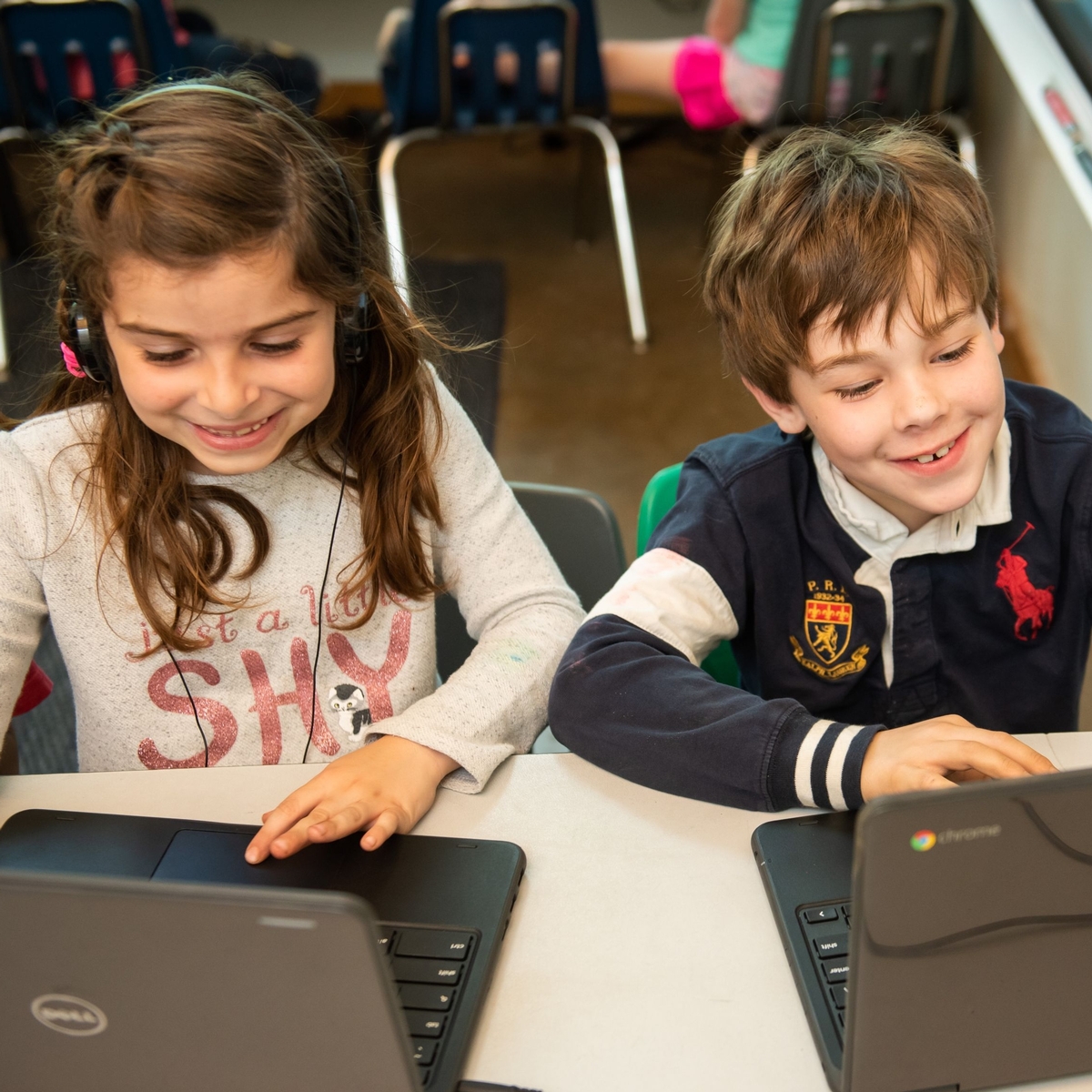
What are the top online threats for kids?
4 Ways to Keep Kids Safe on the Internet
- Restrict electronics in the bedroom. Perhaps create a space in the house like an internet café where the family can all enjoy online time playing games or researching for school projects. Create a shared email account for easy monitoring. Monitor or disconnect camera and photo apps on all devices.
- Reinforce that providing personal information online is dangerous. Never share pictures or personal information, such as where you go to school, take piano lessons, or play a sport.
- Discuss the positives and negatives of social media. Monitor your child’s “friends” list and talk to the parents of your child’s friends, so you are all on the same page regarding what is acceptable.
- Create a dialogue that allows your child to come to you in any situation, even if they may have made a mistake. Most parents were unaware of cyberbullying or related issues until it was too late. Encourage your child to stay safe and let them know they have your full support if they encounter an unsafe situation.
What can you do to keep your family safe?
- Parental controls for Apple products
- Parental controls for Google Play
- Parental controls guide for Chromebook
- Content restrictions for Windows 10 and Xbox One
- Parental controls for YouTube Kids
- Content filters on SafeSearch for Google
- Parental controls on Amazon FreeTime
- Parental controls on Netflix
